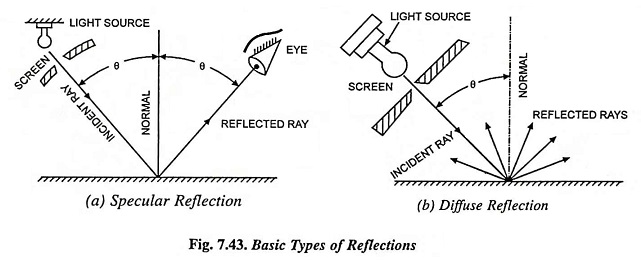What is Reflection Factor? – Types of Reflection
When light falls on a surface, depending upon the nature of the surface, some portion of light energy is reflected, some portion is transmitted through the medium of the surface and the rest is absorbed. The ratio of reflected light energy to the incident light energy is known as reflection factor.
Types of Reflection:
There are two basic types of reflection
- mirror or specular reflection and
- diffuse reflection.
In case of specular reflection a beam of light is reflected but not scattered, and unless the eye is placed in the path of the reflected beam, the viewer is unaware of the existence of light. Moreover, if his eye is placed in the path of the reflected beam, he sees, not the illuminated surface, but the light source. Surfaces causing specular reflection are silvered mirrors, highly polished metals etc. With diffuse reflection the reflected light is scattered in all directions, and the viewer secs the illuminated surface, not the light source.
Surfaces causing diffuse reflection are paper, frosted glass, chalk, dry earth, plaster etc. If a surface that is uniformly illuminated by a beam of light appears to be equally bright when viewed from all possible angles the reflection is said to be perfectly diffused. Perfect mirror surfaces and perfect diffusing surfaces are ideals that do not exist in nature. The reflection from any actual surface is partly specular and partly diffuse, the proportional varying widely. A surface that is almost free from mirror reflection is called a mat surface.
